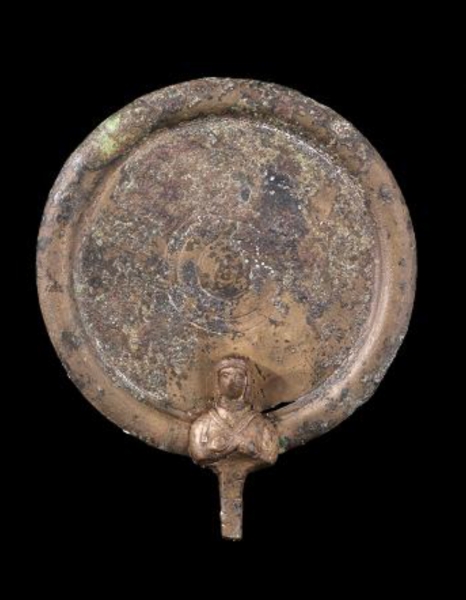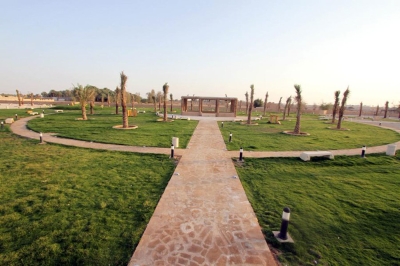
A Bronze Mirror is an ancient mirror made of bronze, featuring a round shape with a raised, twisted rim. It was discovered in archaeological Qaryat al-Faw, at the intersection of Wadi ad-Dawasir and the Tuwaiq Mountains in the southeastern part of Wadi ad-Dawasir Governorate, in Riyadh Province, in the Kingdom of Saudi Arabia. The site is rich in historical artifacts.
The inner surface of the mirror features decorations consisting of a cavity and several circles with grooves in the center, engraved in a recessed style. Traces of the reflective coating used for symmetrical viewing remain on this surface. The outer surface is flat, and the mirror has a handle for holding. At the top of the handle is a figure representing the upper half of a woman, with her arms crossed over her chest and the edge of her garment draped over her left shoulder. Her hair falls in braids on both sides, with bangs descending over her forehead. Her prominent eyes and large nose are distinctly visible.
The bronze mirror was used as an ornament, serving as one of the women's accessories during that period.
Dimensions of the bronze mirror
Mirror diameter: 16.5 cm.
Handle length: Eight cm.
Handle width: 3.8 cm.
History of the bronze mirror
The bronze mirror dates back to the period between the third century BCE and the third century CE. It is preserved at the Museum of the Archaeology Department at King Saud University in Riyadh and is registered under the number 19 F 13.
The discovery of the bronze mirror is part of the results of archaeological survey and excavation efforts carried out by the antiquities and museums sector in Saudi Arabia in past years. It is among the discoveries made by Saudi archaeologists and scientific missions. The bronze mirror was selected as one of the artifacts and collections showcased in the Saudi Archeological Masterpieces Through the Ages Exhibition.
Significance of the bronze mirror
This piece is associated with women's jewelry and beauty accessories. The artisan chose the circular shape using a mold technique and skillfully sculpted the upper half of a woman to form the handle, giving the artwork a distinct aesthetic dimension. The craftsmanship used in making this artifact demonstrates a high level of skill, reflecting how artisans in the Arabian Peninsula incorporated their observations into their work. It also provides insights into the economic status of the society in Qaryat al-Faw before Islam.
Related quizzes
Related articles

